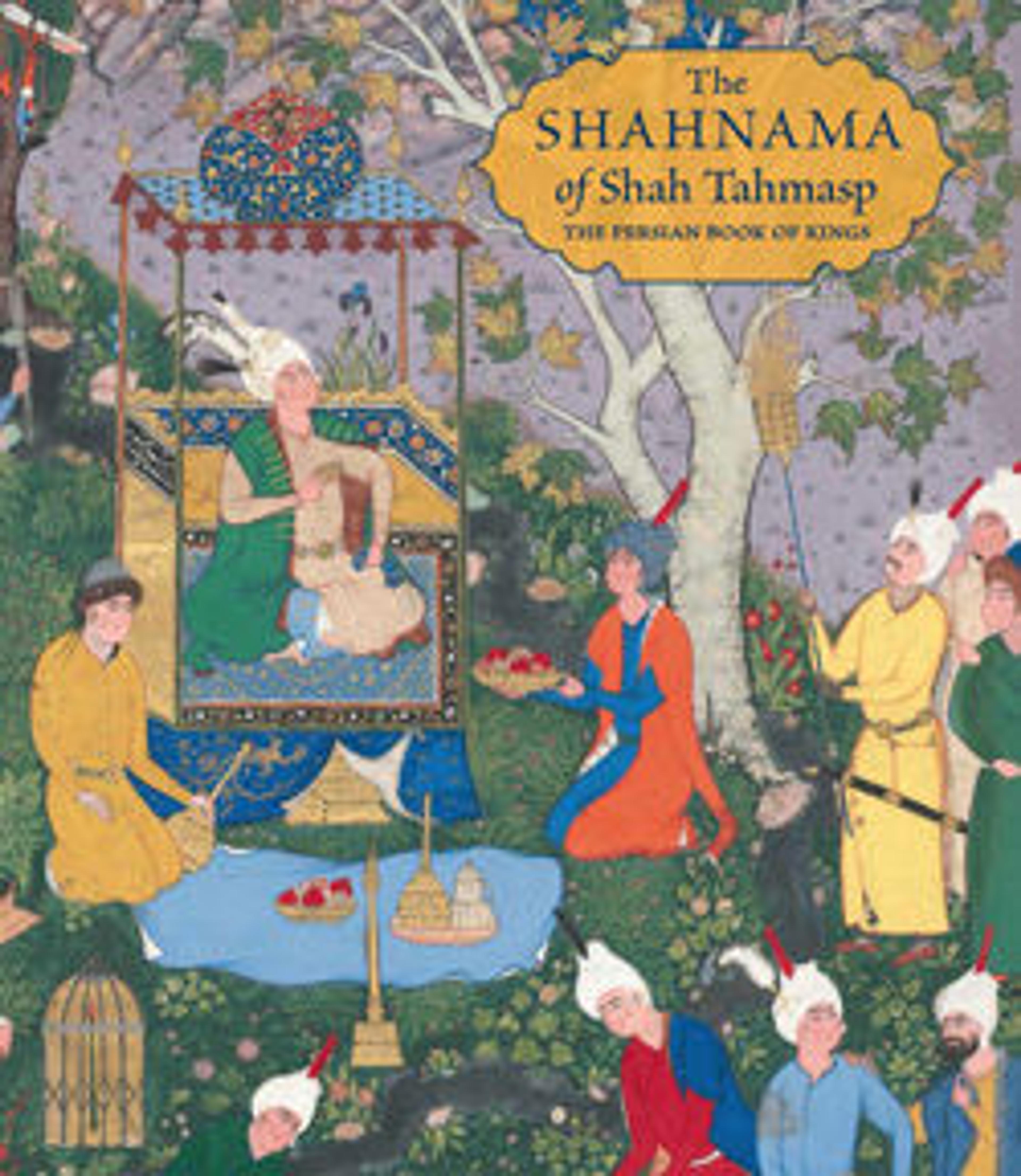"The Combat of Rustam and Ashkabus", Folio 268v from the Shahnama (Book of Kings) of Shah Tahmasp
With daylight the battle resumes. Before the armies can clash, Ashkabus rides out from the Turanian side and starts to abuse the Iranians. After Ruhham tries unsuccessfully to shoot Ashkabus with arrows, Rustam enters the fray. He is on foot, having left Rakhsh to rest. He parries the taunts of Ashkabus, then shoots the Turanian's horse with a single arrow. After that, one arrow from Rustam's bow finishes him off.
Artwork Details
- Title:"The Combat of Rustam and Ashkabus", Folio 268v from the Shahnama (Book of Kings) of Shah Tahmasp
- Author:Abu'l Qasim Firdausi (Iranian, Paj ca. 940/41–1020 Tus)
- Artist:Painting attributed to Mirza Muhammad Qabahat
- Workshop director:'Abd al-'Aziz (active first half 16th century)
- Date:ca. 1525–30
- Geography:Made in Iran, Tabriz
- Medium:Opaque watercolor, ink, silver, and gold on paper
- Dimensions:Painting:
H. 9 3/8 in. (23.8 cm)
W. 7 5/8 in. (19.4 cm)
Entire Page:
H. 18 5/8 in. (47.3 cm)
W. 12 5/8 in. (32.1 cm) - Classification:Codices
- Credit Line:Gift of Arthur A. Houghton Jr., 1970
- Object Number:1970.301.40
- Curatorial Department: Islamic Art
More Artwork
Research Resources
The Met provides unparalleled resources for research and welcomes an international community of students and scholars. The Met's Open Access API is where creators and researchers can connect to the The Met collection. Open Access data and public domain images are available for unrestricted commercial and noncommercial use without permission or fee.
To request images under copyright and other restrictions, please use this Image Request form.
Feedback
We continue to research and examine historical and cultural context for objects in The Met collection. If you have comments or questions about this object record, please contact us using the form below. The Museum looks forward to receiving your comments.
